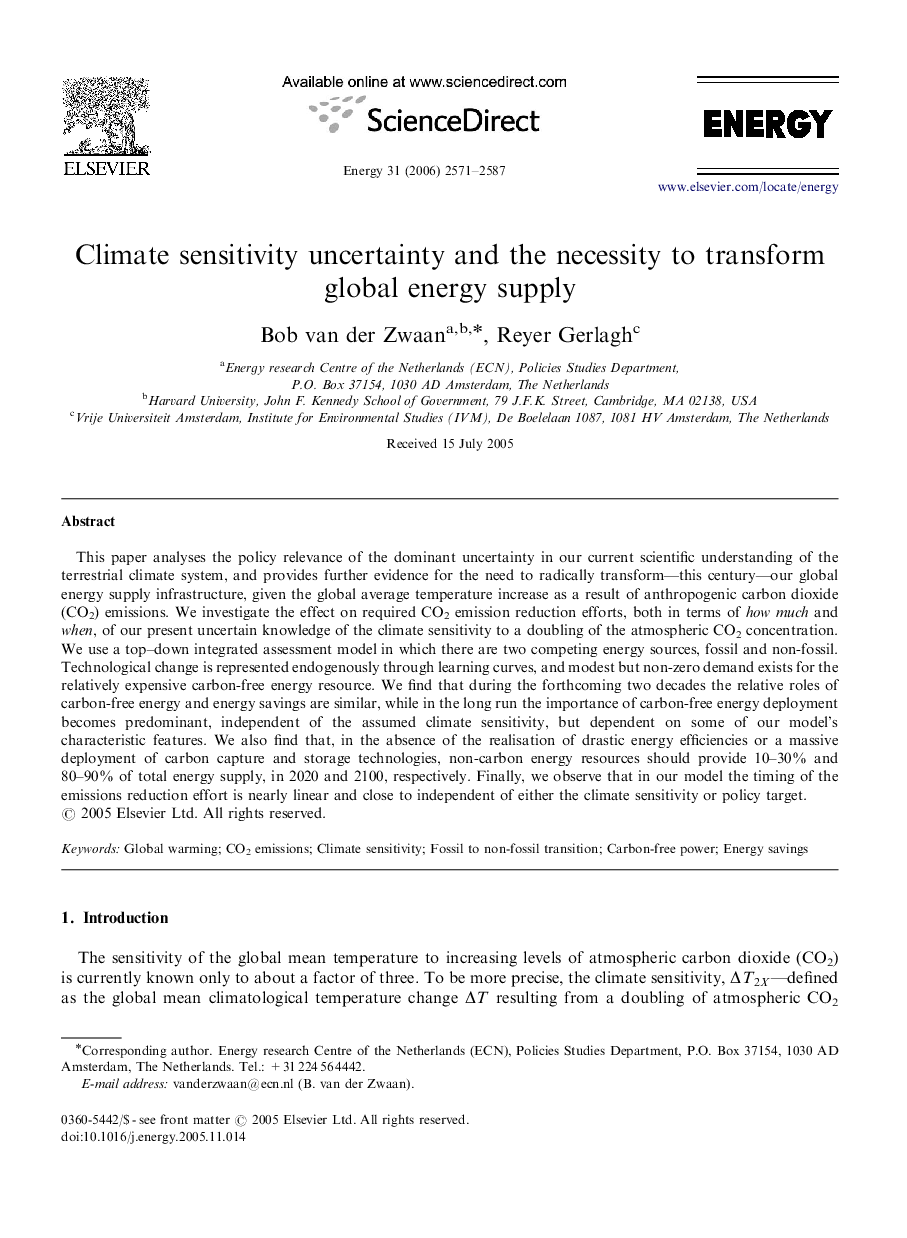| Article ID | Journal | Published Year | Pages | File Type |
|---|---|---|---|---|
| 1736304 | Energy | 2006 | 17 Pages |
This paper analyses the policy relevance of the dominant uncertainty in our current scientific understanding of the terrestrial climate system, and provides further evidence for the need to radically transform—this century—our global energy supply infrastructure, given the global average temperature increase as a result of anthropogenic carbon dioxide (CO2) emissions. We investigate the effect on required CO2 emission reduction efforts, both in terms of how much and when, of our present uncertain knowledge of the climate sensitivity to a doubling of the atmospheric CO2 concentration. We use a top–down integrated assessment model in which there are two competing energy sources, fossil and non-fossil. Technological change is represented endogenously through learning curves, and modest but non-zero demand exists for the relatively expensive carbon-free energy resource. We find that during the forthcoming two decades the relative roles of carbon-free energy and energy savings are similar, while in the long run the importance of carbon-free energy deployment becomes predominant, independent of the assumed climate sensitivity, but dependent on some of our model's characteristic features. We also find that, in the absence of the realisation of drastic energy efficiencies or a massive deployment of carbon capture and storage technologies, non-carbon energy resources should provide 10–30% and 80–90% of total energy supply, in 2020 and 2100, respectively. Finally, we observe that in our model the timing of the emissions reduction effort is nearly linear and close to independent of either the climate sensitivity or policy target.
